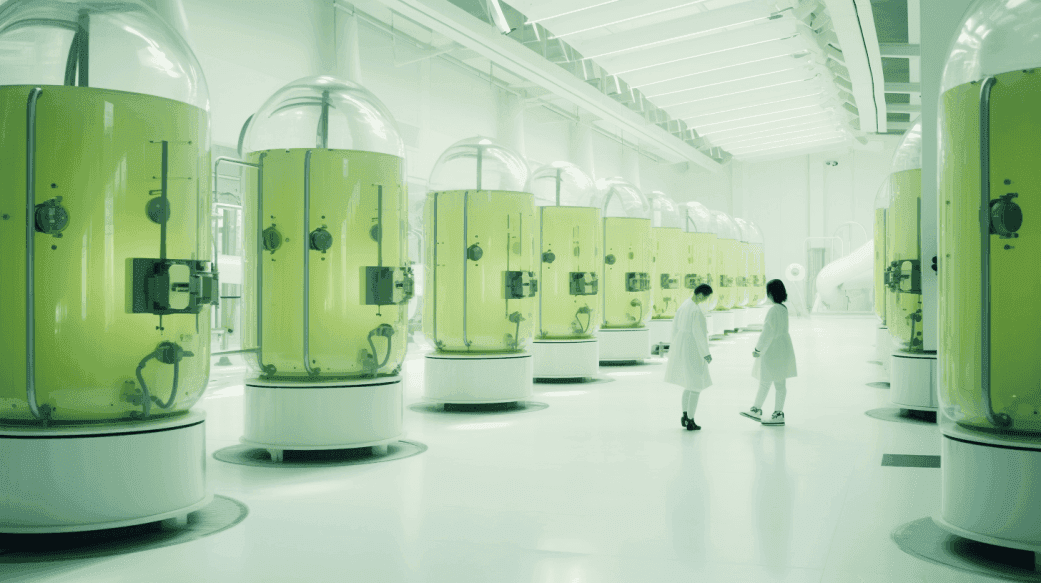Biotechnology is the science that uses life Stop Create innovative solutions to the problems of humanity and the planet. Among the wonders of nature that biotechnology takes advantage of, there are some that highlight for its versatility and potential: microalloys. These microscopic beings, which have billions of years on the planet, biomolecules with therapeutic applications, from vaccines to antibodies. In addition, thanks to genetic editing technologies such as CRISPR-Cas, scientists can edit microalgae DNA to optimize their production and adapt them to different needs. In this article, we will explore how microalgae and CRISPR-Cas are revolutionizing biotechnology and shaping future biological therapies.
Microalgae: Small Ancient Jewelry of Nature
Las Vegas microalloys They are unicellular organisms that belong to a vast and unfamiliar phylum. Despite their microscopic size, these creatures are as close to humans as to plants and represent one of the most life forms Ancient and evolved on Earth. In fact, in evolutionary terms are those who have given Source to the realms we know today as plants, fungi and animals.
Its potential lies in its ability to photosynthesize, converting sunlight and carbon dioxide into energy and biomolecules. This unique feature allows them to grow efficiently and sustainably, which makes them an ideal candidate for the production of biological therapies. An example of this is cyanobacteria, as Arthrospira Platensis (commonly called Spirulina), which itself possesses ancestral characteristics that allowed it to survive and evolve for more than 3500 million years. Its ability to photosynthesize biomolecules is so powerful that the realms we know today derive from it. In this evolutionary process, these organisms acquired the ability to produce numerous biomolecules that used their descendants to grow, defend themselves from pathogens, and proliferate in extreme climatic conditions.
The Revolution of CRISPR-Cas in Microalgae
After knowing the characteristics and origin of microalgae, let's see how technology CRISPR-Cas has opened new possibilities for its biotechnological use. Genetic edition is the technique that allows rewriting the DNA of an organism, that is, its life code. CRISPR-Cas is a tool of genetic editing that works as a molecular scissors that can cut and paste DNA accurately and effectively. We could imagine that DNA is like a cookbook, and that this tool allows us to change the ingredients or instructions to get different results. This technology has also reached the world of microalgae, as scientists can use systems CRISPR-Cases of these organisms to modify their DNA naturally.
This process of genetic editing allows researchers to BioSpi and other organisations develop specialized microalgae that can act as biofactories to produce biological therapies specific. Genetically edited microalgae can be designed to express antigens, proteins and other compounds of interest, which makes them a versatile platform for producing environmentally friendly biological therapies. For example, an oral vaccine against the vaccine may occur. Campilobacter using microalgae that express the antigen of the bacteria. Human insulin can also occur using microalgae that express protein. Other biological therapies that can be produced with microalgae are antibodies, hormones, enzymes or pelptide.
BioSpi: Forming the Biological Therapies of the Future
Now that we see how genetic editing works in microalgae, we know one of the companies that are taking advantage of this technology to create innovative biological therapies. BioSpi, a startup based in Argentina, is an example highlight how microalgae and CRISPR-Cas are transforming biotechnology. This company focused on the development of a sustainable biological therapies platform based on microalgae, being its first product an oral vaccine.
Your disruptive vaccine oral, expressed in microalgae, offers numerous advantages. Reduces carbon footprint by eliminating the need for costly cellular cultures, does not require cooling, offers natural bioencapsulation and prevents resistance generation, making it an innovative and sustainable solution.
The Bright Future of Microalgae in Biotechnology
As we continue to explore the infinite possibilities of microalgae and genetic editing technologies like CRISPR-Cas, the future of biotechnology is glimpsed exciting and promising. BioSpi organizations are leading Biorevolution By demonstrating how these little gems of nature can make a big difference in the production of sustainable biological therapies.
The vision of a future beyond our planetary borders is also becoming clearer. As humanity advances into the exploration and colonization of space, genetically edited microalgae could play a key role in protection of our species. Imagine a future in which biological therapies produced by microalgae are used to fight universal pathogenic agents that may arise in extraterrestrial environments.
With the combination of Synthetic biology, a genetics and microalloys, we are facing a revolution in biotechnology that will not only change the way we face the medical and environmental challenges on Earth, but also provide us with the tools necessary for us. produce biomolecules on inhospitable planets and protect our species on our journey to the stars. The future is promising, and microalgae are the key to facing universal challenges in our journey towards interplanetary exploitation.



Comments